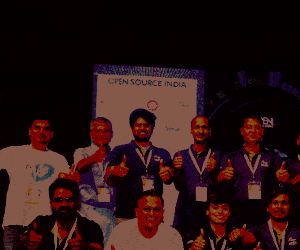- This tool handles signalling, voice, and data in total T3 (DS3) or E3 streams, supporting seamless T1 (DS1) or E1 drop and insert.
- It excels in analysing various protocols like HDLC, ATM, Frame Relay, and PPP, catering to Unchannelized (Unstructured) and Channelized (Structured) T3 E3 Traffic.
GL Communications Inc. introduces the T3 E3 Analyzer, designed for T3 and E3 network monitoring and traffic generation. It provides complete control over constituent T1 and E1 lines, enabling analysis and replication of telecom protocols like ISDN, CAS, and SS7 on T3 E3 networks. This versatile solution manages signalling, voice, and data in complete T3 (DS3) or E3 data streams, supporting seamless T1 (DS1) or E1 drop and insert. It offers an in-depth analysis of protocols like HDLC, ATM, Frame Relay, and PPP, making it suitable for Unchannelized (Unstructured) and Channelized (Structured) T3 E3 Traffic.

A T3 line delivers impressive data transmission speeds of up to 44.736 Mbps, while an E3 line, part of the Plesiochronous Digital Hierarchy (PDH), operates at 34.368 Mbps. Thanks to the channelised feature of the T3 E3 Analyzer, it offers direct access to all channels within a T3 or E3 line, accommodating configurations such as 2×28 T1s, 2×21 E1s, or 2×16 E1s. This comprehensive functionality facilitates seamless emulation, analysis, and monitoring on a single PC, covering various T1 or E1 framing formats, physical layer alarms, and payload examination. Moreover, the T3 E3 hardware platform, in collaboration with the T1 E1 Send Receive Server and Channelized T3 analyser software, can transmit T1 E1 frames over T3 E3 lines and simultaneously capture, record, and monitor multiple T1 or E1 channels across Channelized T3 or E3 connections. This versatile system analyses various signal types, including voice, digits, tones, fax, modem signals, and raw data. Some of its key features include:
- Compact and lightweight analysis platforms for T3 (DS3) and E3, featuring the ability to capture dual data streams.
- Supporting a wide range of testing scenarios with multiple interfaces for analysis, including T3 (DS3)/E3 and T1 E1.
The software offers selectable T3 (DS3) and E3 interfaces, along with T1 and E1 Drop and Insert capabilities. It supports dual T3 (DS3) / E3 receivers and transmitters for simultaneous non-intrusive and intrusive testing in eastbound and westbound directions. The system offers flexible clocking options, including internal, recovered (from T3 E3, T1, or E1), and external sources. It also enables scripting and automation through GL’s Windows Client Server (WCS) approach, allowing for Python script integration on Windows and Linux operating systems. Additionally, it includes an HDL File Conversion utility for converting between ethereal format files (*.pcap, *.cap, and *.pcapng) and GL’s file format (*.hdl) and vice versa.
Unchannelized and Channelized Testing
The testing capabilities of this system can be categorized into two main modes: Unchannelized (Unstructured) Testing and Channelized (Structured) Testing. In the Unchannelized (Unstructured) Testing mode, the system offers the flexibility to conduct tests without predefined channels. It facilitates the analysis and simulation of various protocols such as ATM, PPP, HDLC, and Frame Relay. Users can also send and verify HDLC frames with headers that they can customize. Moreover, the system supports features like scrambling and subrate, making use of DSU vendors’ algorithms for the T3 interface, which includes vendors like Digital Link, Larscom, Verilink, and Adtran.
The Channelized (Structured) Testing mode provides a structured approach to testing. It includes valuable drop and insert capabilities and uses the dual T1 E1 ports on the hardware. This mode allows for the multiplexing and de-multiplexing of T1 (DS1)/E1 signals to enable drop and insert functionalities. It also supports bidirectional monitoring through dual T1 (DS1)/E1 drop, and the system can transmit either externally inserted or internally generated T1 or E1 streams into T3 (DS3)/E3 lines. Additionally, it can conduct stress tests on M13 (E13) multiplexers and 3/1 Digital cross-connect systems. Furthermore, it offers the flexibility of dual-channel drop and insert of T1 or E1 signals from any T3 (DS3)/E3 signal, along with options for broadcasting or loopback of individual T1s/E1s received from T3 (DS3)/E3.
Testing and Analysis Capabilities
The system includes a BIT Error Rate Test (BERT) capability for simultaneous T3 E3 channel testing through WCS commands. It also incorporates Tx/Rx Server Software, enabling T1 E1 frame transmission over T3 E3 lines via the T1 E1 Transmit Server. The T1 E1 Receive Server demultiplexes T3 E3 data into T1 or E1 channels. This allows sending and receiving 28 T1 channels per port from a T3 signal, 21 E1 channels per port (G.747 Mapping) from a T3 signal, and 16 E1 channels from an E3 signal. The system enables monitoring of framed and unframed T1 E1 signals (Rx Only) and simultaneous analysis of all 56 T1s (1.544 Mbps each) or 32 E1s (2.048 Mbps each). It provides analysis capabilities for Fractional T1s and E1s, N x T1s or N x E1s, and any combination of DS0s (64 kbps each) within the T1s or E1s, totaling 1,344 DS0s for T1 or 1,024 DS0s for E1. Additionally, it supports Protocol Analysis for all structured protocols, including HDLC, ISDN, CAS, and more, while monitoring T1 E1 alarms, payload, and framing structure.












